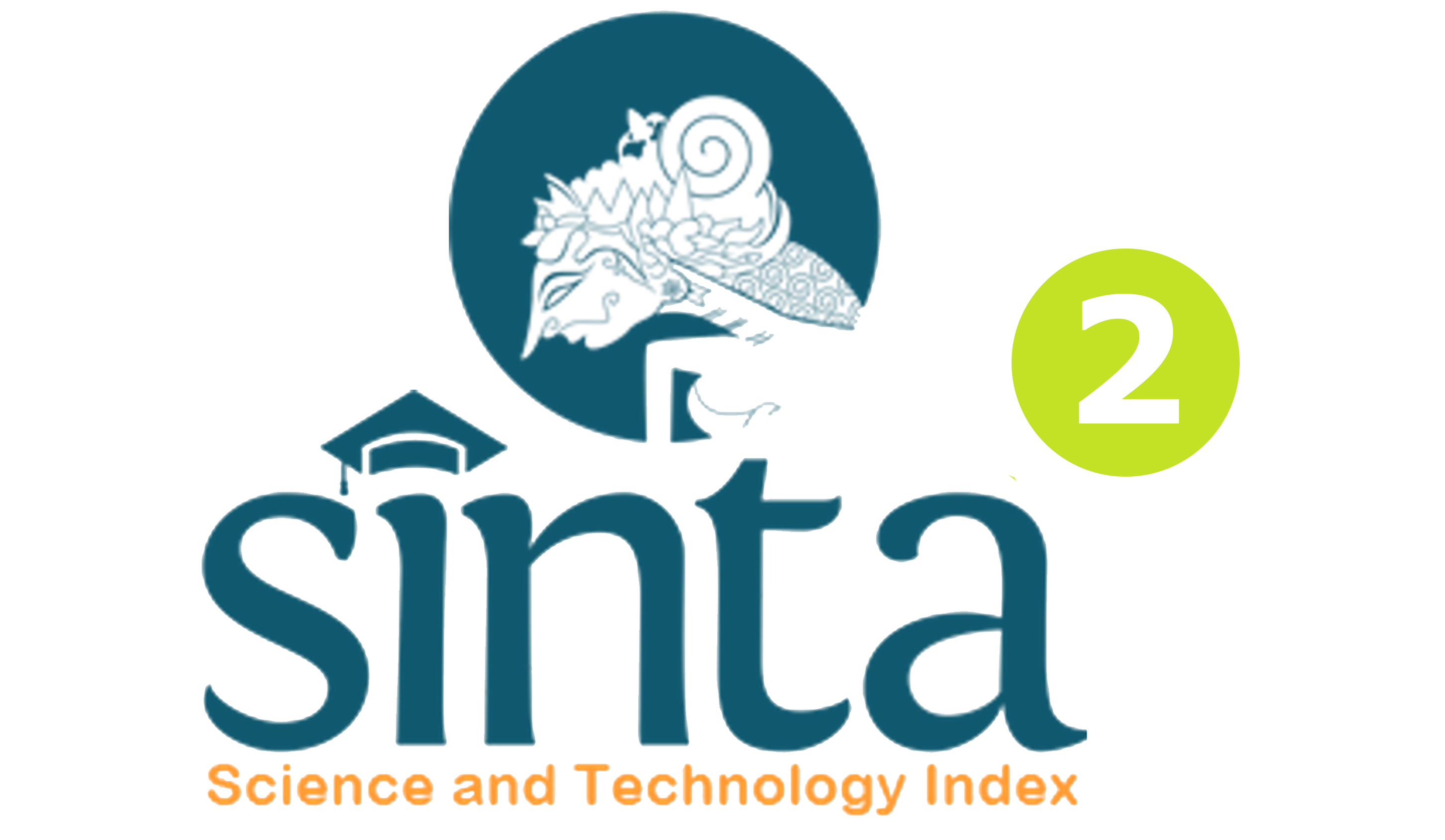Food Grabbing Behavior Modification Program Using Shaping Techniques with Tablet Media for Autistic Children
DOI:
https://doi.org/10.23887/ivcej.v6i2.67484Keywords:
Behavior Modification, Shaping Technique, AutismAbstract
Children with autism often have difficulty interacting socially and understanding applicable social norms. Therefore, appropriate behavior modification strategies are needed to help autistic children overcome food-grabbing behavior and learn how to interact better socially. This research aims to use shaping techniques to change the behavior of autistic students who often grab other people's food. This research involves the use of tablet media as a tool to provide intervention. The research subjects in this study were autistic students who tended to snatch other people's food. This research uses the Single Subject Research method with an A-B design. Data in this research was collected through audio documentation, photos, videos, and written documentation. The data was then analyzed using within-condition analysis and between-condition analysis. The research results show that the shaping Technique using tablet media effectively changes the behavior of autistic students who often grab other people's food. By using shaping techniques, autistic students can understand that snatching other people's food is not right and can control themselves not to do it. It shows that the use of behavior modification techniques using tablet media can help autistic students overcome unwanted behavior.
References
Amalia, G. (2016). Efektivitas teknik Discrete Trial Training (DTT) untuk meningkatkan kemampuan mengenal warna primer bagi anak autis X DI SLB Autisma Mutiara Bangsa Padang. Jurnal Penelitian Pendidikan Khusus, 4(3). https://doi.org/10.24036/jupe60860.64.
Anggriana, T. M., Kadafi, A., & Trisnani, R. P. (2018). Peningkatan keterampilan sosial siswa autis melalui teknik shaping. Jurnal Fokus Konseling, 4(2), 162–168. https://core.ac.uk/download/pdf/229583398.pdf. DOI: https://doi.org/10.26638/jfk.505.2099
Astrini, S. R. (2021). Penggunaan Modifikasi Perilaku Tipe Reward Untuk Meningkatkan Motivasi Belajar Anak Usia Dini. Jurnal Golden Age, Universitas Hamzanwadi, 5(2), 104–110. https://doi.org/10.29408/goldenage.v5i01.3295.
Cooper, J. O., Heron, T. E., & Heward, W. L. (2019). Applied behavior analysis. Pearson.
Dewi, N. N. A. I., & Retnoningtyas, D. W. (2019). Efektivitas Applied Behavior Analysis terhadap Kemampuan Interaksi Sosial Murid SLB dengan Gangguan Spektrum Autis di Bali. Jurnal Psikologi Mandala, 3(2), 21–28. https://doi.org/10.36002/jpm.v3i2.1093. DOI: https://doi.org/10.36002/jpm.v3i2.1093
Febtriko, A., Yulianti, W., & Rahayuningsih, T. (2019). Pemanfaatan Ubtech Humanoid Robot Sebagai Media Pembelajaran Kepada Guru Menuju Era Revolusi Industri 4.0 Dibidang Pendidikan Untuk Anak Autis Di Pekanbaru Lab School. Jurnal Pengabdian Masyarakat Multidisiplin, 3(1), 42–52. https://doi.org/10.36341/jpm.v3i1.1022. DOI: https://doi.org/10.36341/jpm.v3i1.1022
Fitriana, I. (2013). Translation Analysis of Directive Speech Acts in" Eat Pray Love" Novel and Its Translation into Indonesian. Prasasti: Journal of Linguistics, 2(2). https://doi.org/10.20961/prasasti.v2i2.332. DOI: https://doi.org/10.20961/prasasti.v2i2.332
Hardi, N. A., Sidik, S. A., & Mulia, D. (2022). Penerapan modifikasi perilaku menggunakan token ekonomi untuk mengurangi perilaku hiperaktif dalam pembelajaran anak down syndrome. Jurnal Unik : Pendidikan Luar Biasa, 7(1), 23–27. https://doi.org/10.30870/unik.v7i1.12995. DOI: https://doi.org/10.30870/unik.v7i1.12995
Ishartiwi, I., Sukinah, S., & Taqiyah, D. B. (2023). Pelaksanaan Asesmen dan Intervensi Anak Autisme. Jurnal Obsesi: Jurnal Pendidikan Anak Usia Dini, 7(3), 3127–3136. https://doi.org/10.31004/obsesi.v7i3.4570. DOI: https://doi.org/10.31004/obsesi.v7i3.4570
Kazdin, A. E. (2017). Behavior modification in applied settings. Routledge.
Kurdghelashvili, T. (2015). Speech acts and politeness strategies in an EFL classroom in Georgia. International Journal of Cognitive and Language Sciences, 9(1), 306–309. https://doi.org/10.5281/zenodo.1338098.
Lancioni, G. E., O’Reilly, M. F., Singh, N. N., Sigafoos, J., & Didden, R. (2014). Technology-aided programs to support positive behaviors in individuals with autism spectrum disorders: A review. Journal of Behavioral Education, 23(2), 253–279. https://www.tandfonline.com/doi/abs/10.3109/17518423.2015.1133724.
Lane, R., & Radesky, J. (2019). Digital Media and Autism Spectrum Disorders: Review of Evidence, Theoretical Concerns, and Opportunities for Intervention. Journal of Developmental and Behavioral Pediatrics : JDBP, 40(5), 364–368. https://doi.org/10.1097/DBP.0000000000000664. DOI: https://doi.org/10.1097/DBP.0000000000000664
Lim, C. P., & Choo, H. (2019). The Use of Technology in Behavior Modification Programs for Children with Autism Spectrum Disorder: A Systematic Review. International Journal of Special Education, 34(1), 1–14. https://www.frontiersin.org/articles/10.3389/fpsyg.2023.1095164/full.
Machalicek, W., & O’Reilly, M. F. (2015). Using Technology to Support Behavioral Interventions for Children with Autism Spectrum Disorders. Journal of Early and Intensive Behavior Intervention, 8(2), 166–184. https://doi.org/10.1177/014544550730458.
Mayton, M. R., Carter, S. L., Zhang, J., & Wheeler, J. J. (2014). Intrusiveness of Behavioral Treatments for Children with Autism and Developmental Disabilities: An Initial Investigation. Education and Training in Autism and Developmental Disabilities, 49(1), 92–101. https://www.jstor.org/stable/23880657. DOI: https://doi.org/10.1016/j.ridd.2013.10.023
Migliore, A., Butterworth, J., & Nye-Lengerman, K. (2021). Rethinking Management Information Systems for Scaling up Employment Outcomes. Journal of Disability Policy Studies. https://doi.org/10.1177/10442073211043518. DOI: https://doi.org/10.1177/10442073211043518
Nurfadhillah, S., Syariah, E. N., Mahromiyati, M., & Nurkamilah, S. (2021). Analisis Karakteristik Anak Berkebetuhan Khusus (Autisme) Di Sekolah Inklusi SDN 3 Cipondoh. Jurnal Pendidikan Dan Sains, 3, 456–465. https://ejournal.stitpn.ac.id/index.php/bintang/article/view/1548.
Ozonoff, S., Young, G. S., Carter, A., Messinger, D., Yirmiya, N., Zwaigenbaum, L., Bryson, S., Carver, L. J., Constantino, J. N., Dobkins, K., Hutman, T., Iverson, J. M., Landa, R., Rogers, S. J., Sigman, M., Stone, W. L., & Volkmar, F. R. (2011). Recurrence risk for autism spectrum disorders: A Baby Siblings Research Consortium study. Pediatrics, 128(3), 488– 495. https://doi.org/10.1542/peds.2010-2825. DOI: https://doi.org/10.1542/peds.2010-2825
Padmadewi, N. N., & Artini, L. P. (2017). Teaching english to a student with autism spectrum disorder in regular classroom in Indonesia. International Journal of Instruction, 10(3), 159–176. https://doi.org/10.12973/iji.2017.10311a. DOI: https://doi.org/10.12973/iji.2017.10311a
Prahmana, R. C. I. (2021). Single Subject Research (Teori dan Implementasinya: Suatu Pengantar. UAD Press.
Pratama, G. S., Alamsyah, S. A., Awaliya, A. P., Firmansyah, M. F. A., & Simatupang, M. M. (2019). Penggunaan Media Aplikasi E-Bd2 Berbasis Smartphone Bagi Anak Tunagrahita Ringan Di Skh Pandhita Kota Serang. Jurnal UNIK: Pendidikan Luar Biasa, 4(1). https://doi.org/10.30870/unik.v4i1.5586.
Rachmawaty, F. (2015). Penggunaan Teknik Shaping dengan Training pada Anak Autis. Psikoislamika: Jurnal Psikologi Dan Psikologi Islam, 12(1), 5–12. https://doi.org/10.18860/psi.v12i1.6390. DOI: https://doi.org/10.18860/psi.v12i1.6390
Rapp, A., Cena, F., Castaldo, R., Keller, R., & Tirassa, M. (2018). Designing technology for spatial needs: Routines, control and social competences of people with autism. International Journal of Human-Computer Studies, 120, 49–65. https://doi.org/10.1016/j.ijhcs.2018.07.005. DOI: https://doi.org/10.1016/j.ijhcs.2018.07.005
Rifin, M., & Kurniawan, A. (2018). Program Modifikasi Perilaku Merebut Makanan melalui Teknik Shaping dengan Media Tablet bagi Anak Autis. Jurnal Ilmu Kesehatan, 1(2), 41–46. https://core.ac.uk/download/pdf/370605110.pdf.
Riga, A., Ioannidi, V., & Papayiannis, N. (2020). Autism spectrum disorder and social stories purpose and utility. Asian Journal of Education and Social Studies, 12(4), 19–26. https://doi.org/10.9734/AJESS/2020/v12i430317. DOI: https://doi.org/10.9734/ajess/2020/v12i430317
Rogers, S. J., & Vismara, L. A. (2008). Evidence-based comprehensive treatments for early autism. Journal of Clinical Child and Adolescent Psychology, 37(1), 8–38. https://doi.org/10.1080/15374410701817808. DOI: https://doi.org/10.1080/15374410701817808
Rustandar, A., & Widinarsih, D. (2023). Metode dan Media Pembelajaran untuk Pendidikan Inklusi bagi Penyandang Autis di Indonesia. Jurnal Pendidikan Kebutuhan Khusus, 7(1), 38–56. https://doi.org/10.24036/jpkk.v7i1.743.
Saihu, S. (2019). Komunikasi Pendidik Terhadap Anak Berkebutuhan Khusus di Sekolah Khusus Asy-Syifa Larangan. Andragogi: Jurnal Pendidikan Islam Dan Manajemen Pendidikan Islam, 1(3), 418–440. https://doi.org/10.36671/andragogi.v1i3.66. DOI: https://doi.org/10.36671/andragogi.v1i3.66
Stiller, A., & Mößle, T. (2018). Media Use Among Children and Adolescents with Autism Spectrum Disorder: a Systematic Review. Review Journal of Autism and Developmental Disorders, 5(3), 227–246. https://doi.org/10.1007/s40489-018-0135-7. DOI: https://doi.org/10.1007/s40489-018-0135-7
Suryani, I., & Dewi, N. F. K. (2018). Aplikasi Terapi Untuk Anak Autisme Dengan Metode ABA (Applied Behavior Analysis) Berbasis Media kartu Bergambar dan Benda Tiruan. Ceria: Jurnal Program Studi Pendidikan Anak Usia Dini, 6(1), 16. https://doi.org/10.31000/ceria.v6i1.554. DOI: https://doi.org/10.31000/ceria.v6i1.554
Downloads
Published
How to Cite
Issue
Section
License
Copyright (c) 2023 Wagino, Aloysia Dian Nimas Prameswari

This work is licensed under a Creative Commons Attribution-ShareAlike 4.0 International License.








